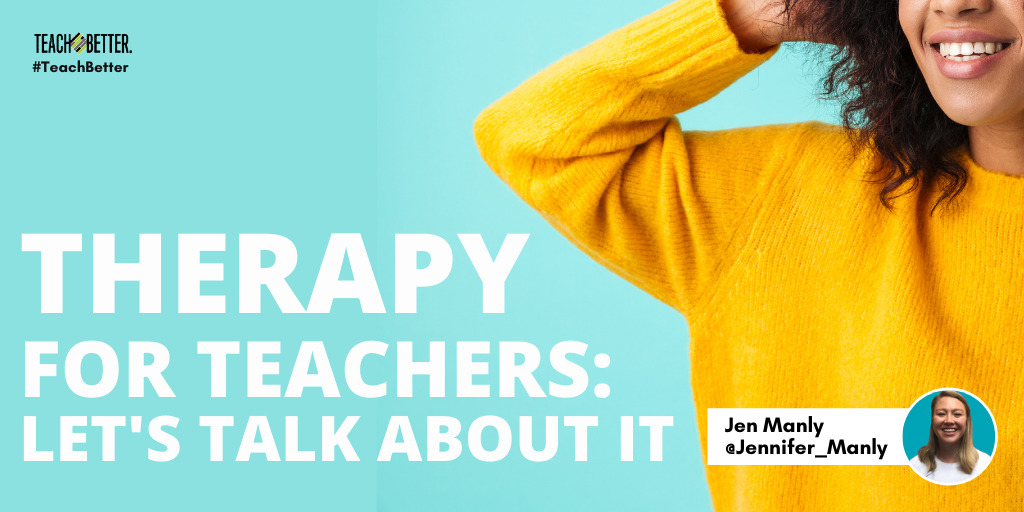TL;DR:
- Educators can normalize prioritizing mental health, both in crisis and as a preventative measure, by considering therapy.
- Zoodoc, BetterHelp, and Talkspace are resources people can use if they are considering options for therapy.
My 2020 New Year’s Resolution was simple: find a therapist, and commit to going regularly.
I first met with Dr. Y in January. I found her through my insurance, and chose her because I could meet with her virtually. I felt like I would be less likely to skip a week if all I had to do was log in to my computer and start a virtual call. Little did I know, this would come in handy in March when in-person appointments everywhere became obsolete.
I started going to therapy as a preventative measure. I was experiencing mild anxiety (particularly while flying), and wanted someone to process with. That initial decision to start in January meant that I had already established a routine by March when the pandemic hit.
Teaching is an emotionally demanding job even outside of COVID. We are tasked not only with teaching content, but with making it meaningful, building in SEL, and differentiating to meet every student’s needs. We must be vulnerable, empathetic, understanding, and flexible.
And then, add finishing the 2019-2020 school year online. Hours of screen time a day. Limited social interaction. New tech tools. Massive amounts of prep time. Entirely new pedagogical approaches.
Oh, and the trauma of living through a pandemic. The anxiety, the fear, the complete lack of control of the situation. While some people may have decided to read up on the benefits of CBD products when it comes to managing stress and anxiety, others may not want to go down a medication route and will look for another way to help them cope with their feelings and mental health.
Let me be clear: I love teaching. I love connecting with students—learning about them as individuals, seeing their growth, experiencing the learning process with them. Like you, I work hard to be a great teacher; I attend PD and conferences in my free time, I read books about child development, and research developments in computer science education (what I teach). Teaching is an extremely fulfilling career, and I am grateful every day that I get to be a teacher.
But, I am a better teacher because I go to therapy.
Most importantly, when we take care of our mental health, we model its importance to our students. We create space for them to prioritize their mental health, too. Share on XWe owe it to our students to normalize prioritizing our mental health—both in crisis and as a preventative measure.
When we make time for our mental health, we are able to be fully present for them. We are better able to be empathetic, patient, and understanding. We learn how to manage our emotions, and how to recognize when we need a break.
Most importantly, when we take care of our mental health, we model its importance to our students. We create space for them to prioritize their mental health, too.
When I reflect on the past seven months, I credit much of my success in terms of finding joy in distance learning to my weekly, 45-minute meetings with Dr. Y. We meet via video conference, and she has been critical in helping me process all of the complex emotions and anxieties we’ve all experienced this year.
For me, therapy is self-care. It’s 45 minutes every week that I’ve committed to actively working on myself. It’s a safe space where I can process emotions, frustrations, and wins with a professional—someone who is not only impartial, but trained to ask me questions that challenge my thinking. She’s helped me establish routines and find normalcy in a year that is as abnormal as they come.
[scroll down to keep reading]
Considering therapy, but don’t know where to start?
Your health insurance’s website. One of the major perks of teaching is that typically, our health insurance is comprehensive. Use your health insurance website to search for providers near you, typically categorized under Behavioral or Mental Health. Using their search tool, and depending on your needs, you can find Licensed Professional Counselors (LPC), Psychologists, or Psychiatrists. If they’re in network, you’ll pay only your copay. Some teachers are covered by self-funded health insurance from providers like Sana Benefits whereas others take out their own insurance because it’s not provided to them as a park. Be sure to look into which policy you have so you know how much coverage you have.
Zocdoc. Zocdoc allows you to find providers near you and book appointments online. If you’re someone who prefers the ease of virtual booking, Zocdoc will be your BFF. As a bonus, you can sort providers by your insurance, and you’ll see reviews from other patients. Zocdoc also makes it easy to see which providers offer virtual visits.
Fully virtual options. If your insurance doesn’t cover mental health providers, or you prefer the ease of an app on your phone, fully virtual options might be for you. Two popular options are BetterHelp and Talkspace, which offer monthly subscriptions.
I am a better teacher because I go to therapy. And you could be, too.
About Jen Manly
Jen Manly is passionate about helping teachers implement systems to ensure that all students can engage in learning that is meaningful, challenging, and fun. She is a Computer Science Master Teacher with the Terrapin Teachers Program at the University of Maryland, which means she teaches at both the University and high school level. Prior to moving into this role, Jen taught computer science at the middle school level. She is a skilled facilitator and has presented to thousands of educators at the local, state, and national level, including ISTE, CSTA, and ITEEA. In 2019, she was the ITEEA Middle School Teacher Excellence awardee for the state of Maryland.


